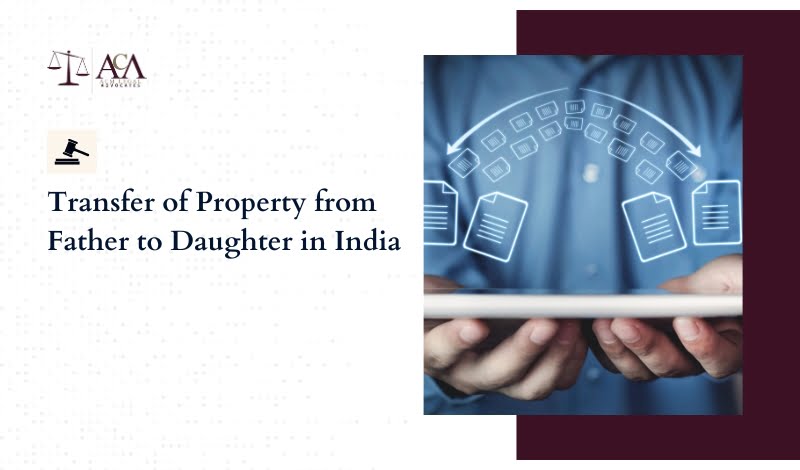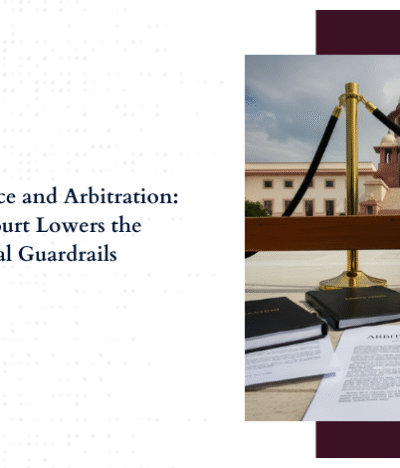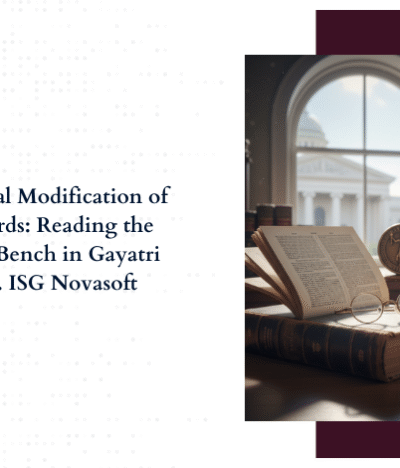How to transfer property from father to daughter in India? In India, property transfer from a father to a daughter involves methods such as drafting a gift deed, sale deed, will or intestate succession.
However, these avenues entail adherence to specific legal formalities, including documentation, stamp duty payments and registration at the sub-registrar office. These steps ensure the legality and validity of the property transfer from father to daughter, safeguarding the interests of both parties involved.
How to Transfer Property from Father to Daughter in India
When considering how to transfer property from a father to a daughter in India, it’s essential to navigate legal procedures adeptly. These steps are vital for ensuring the legality and validity of the property transfer from father to daughter.
1. Transferring Property Through a Gift Deed
Transferring property through a gift deed involves legally transferring ownership from one person (the donor) to another (the donee) without financial compensation, typically among family members.
1.1. Drafting the Gift Deed
A gift deed should be drafted, including the details of the property, the donor (father) and the donee (daughter). It should clearly state that the transfer is a gift without any monetary exchange.
1.2. Acceptance by the Donee
The daughter must accept the gift during the lifetime of the father.
1.3. Stamp Duty
For property transfer through a gift deed in blood relation, you are exempted from exposing the value of the property. But, in some cases, you might need to pay the stamp duty, which varies from state to state.
In Maharashtra, stamp duty for gifting property to family members like spouses, children or grandchildren is capped at Rs 200/-, regardless of property value.
Uttar Pradesh imposes a stamp duty of Rs 5,000/- for similar property gifts to family members, ensuring uniformity and facilitating transactions within families.
In Delhi, stamp duty and transfer duty @ 4% of the circle rate if the donee is a woman and @ 6% of the circle rate in the case of a male and if the possession is joint, 5% of the circle rate is applicable.
1.4. Registration
For registering the gift deed, both parties must visit the Sub-Registrar’s office along with two witnesses, with the required documents, including the original gift deed, identity proofs (Aadhaar, PAN card) and the original property documents. The registration fee may differ from state-to-state.
1.5. Required Documents
- Drafted Gift Deed
- Proof of Identity
- Property Documents
- Encumbrance Certificate
- No Objection Certificate (if applicable)
- Proof of Payment of Stamp Duty
2. Transferring Property Through a Sale Deed
Transferring property through a sale deed involves transferring ownership from a seller to a buyer in exchange for a specified monetary consideration.
2.1. Agreement to Sell
Before drafting the sale deed, the father and daughter should reach an agreement regarding the terms of the sale. This includes the sale price, the description of the property and any other conditions of the sale.
2.2. Drafting the Sale Deed
A sale deed is a legal document that formally transfers ownership of the property from the seller (father) to the buyer (daughter). The deed should include:
- Details of the parties (father and daughter)
- Description of the property
- Sale consideration (price)
- Mode of payment
- Transfer of rights, title and interest
- Date of possession transfer
2.3. Execution of the Sale Deed
Both parties must sign the sale deed. This signing should take place in the presence of at least two witnesses who will also sign the document at the concerned sub-registrar’s office.
2.4. Payment of Stamp Duty and Registration Fees
The daughter (buyer) is typically responsible for paying the stamp duty and registration fees. The amount varies depending on the property’s location and its value. Payment is made at the local sub-registrar’s office.
2.5. Registration of the Sale Deed
The sale deed must be registered with the local sub-registrar to be legally valid. Both parties need to be present along with the witnesses and original documents. The following documents are generally required:
- Signed sale deed
- Identity proofs of the buyer and seller (e.g., Aadhaar card, PAN card)
- Passport-sized photographs
- Proof of payment of stamp duty and registration fees
- Previous title documents of the property
- Encumbrance certificate
During registration, the sub-registrar will verify the documents and ensure compliance with legal requirements. After verification, the sale deed is recorded, and a registered copy is provided to the buyer.
2.6. Mutation of Property
After registration, the daughter should apply for the mutation of the property in the local municipal records. This updates the property records to reflect the new ownership.
3. Transfer of property via Succession
Transferring property via succession occurs when the ownership is passed to heirs or beneficiaries through inheritance laws or through a will.
3.1. Testamentary Succession
Testamentary succession, as defined by the Indian Succession Act, refers to the distribution of a deceased person’s property based on their will or testament. According to Section 2(h) of the Indian Succession Act, 1925, “testamentary succession” means “the disposition of the property of a deceased person, made by a Will.
3.1.1. The Will
The will should clearly state the intention to transfer the property to the daughter upon the father’s demise. The will should include details of the property and the names of the beneficiaries. It should specify the property and the exact share each beneficiary (if there are others) will receive.
The will must be signed by the father in the presence of at least two witnesses who also sign the will, attesting that the execution was voluntary.
Although not mandatory, registering the will with the Sub-Registrar provides an additional layer of authenticity and reduces the risk of future disputes.
3.1.2. Declaration of Title Suit
The plaintiff (in this case, the daughter) files a suit in a civil court asserting her right to the property. The plaintiff must establish her legal right or title to the property. This involves providing documentary evidence such as wills, title deeds and other relevant documents that prove her ownership.
The court examines the evidence provided. Witnesses may be called to testify. Both documentary and oral evidence are considered.
The court, at its discretion, may issue a declaration affirming the plaintiff’s title to the property if it is satisfied with the evidence.
3.1.3. Probate Process ( If Required)
Upon the father’s demise, in cities like Mumbai, Chennai and Kolkata, the probate of a will is mandatory. Also, in some cases, if the property is situated in another city, the probate becomes necessary to be executed in the city where the will is being executed. The executor named in the will files a petition for probate. The court verifies the will, and if found valid, grants probate, which gives the executor the authority to distribute the property as per the will’s instructions.
3.1.4. Mutation of Property
Submit an application for mutation of property in the local municipal or revenue office to update the property records.
3.1.5. Documents Required
- Drafted Will
- Death Certificate
- Identity Proofs
- Witnesses Identity Proof
- Executor’s Identity Proof
- Property Documents
- Legal Heir Certificate
- Succession Certificate
- Any Other Relevant Documents
3.2. Intestate Succession (Without a Will)
Intestate succession refers to the legal process of distributing the property of a deceased individual who did not leave a valid will. In such cases, the distribution of the deceased’s assets is governed by the rules depending on the personal laws applicable to the deceased’s religion or community.
3.2.1. Identifying legal heirs
The first step in the process is to identify the legal heirs of the deceased father. The legal heirs are determined based on the personal laws applicable to the deceased’s religion. In India, different personal laws govern intestate succession for individuals belonging to different religions, such as Hindu, Muslim, Christian, etc. The legal heirs typically include the spouse, children (both sons and daughters), parents and other close relatives as defined by the applicable personal laws.
3.2.2. A legal heir certificate or Succession Certificate
Once the legal heirs are identified, they need to obtain a legal heir/succession certificate from the relevant authority. This certificate serves as proof of the legal heir’s entitlement to the deceased’s assets. The application for these certificates usually requires submitting documents such as the death certificate of the deceased, proof of relationship with the deceased (such as birth certificates) and any other relevant documents specified by the authorities.
3.2.3. Verification and issuance of certificate
The relevant authority verifies the documents submitted along with the application to establish the claim of the legal heirs. Upon satisfactory verification, the authority issues a legal heir/ succession certificate.
3.2.4. Partition of property
If the deceased father leaves behind multiple legal heirs the next step is to partition the property among them. The partition process involves determining the shares of each legal heir as per the applicable personal laws.
For example, in the partition of property among Hindus in India, the process follows the rules of intestate succession, governed by the Hindu Succession Act, 1956. Class I heirs, comprising the spouse, children and parents of the deceased, hold primary rights to the estate. In the absence of a will, the property is divided equally among them. Class II heirs, including father, siblings and grandparents, inherit if there are no Class I heirs. Further, in the absence of both Class I and Class II heirs, the property devolves upon agnates (father’s male relatives) or cognates (mother’s female lineage). This system ensures a systematic and fair distribution of assets among the legal heirs according to the Hindu Succession Act.
3.2.5. Mutation of property titles
Once the shares of the legal heirs are determined through the partition process, the next step is to overview the transfer of property titles in their names. This is done through a mutation process conducted by the municipal corporation, depending on the nature of the property. The legal heirs must submit the legal heir certificate along with other relevant documents to initiate the mutation process. After due verification, the property titles are transferred to the names of the respective legal heirs.
3.2.6. Transfer of possession and ownership
After the mutation of property titles is completed, the legal heirs, including the daughter, become the rightful owners of their respective shares of the deceased father’s property.
3.2.7. Documents Required
- Death Certificate
- Legal Heir Certificate
- Identity Proof
- Property Documents
- Affidavit (if required)
- Succession Certificate
- Any Other Relevant Documents
Common Challenges of Transferring Property from Father to Daughter
Navigating the transfer of property from father to daughter in India poses several challenges:
Legal Formalities and Documentation
Ensuring all legal formalities and documentation are correctly completed can be challenging. Property transfer involves complex legal documentation, including the deed of transfer, property registration and possibly updating public records. Mistakes or omissions can invalidate the transfer or lead to future legal complications.
Family Disputes
Potential disputes among family members can complicate property transfers, even if they are in accordance with inheritance laws. Siblings or other relatives may contest the transfer if they feel unfairly treated or excluded from the inheritance. These disputes can arise due to perceived inequities, misunderstandings or long-standing family tensions.
Succession Laws and Inheritance Rights
India has diverse succession laws based on religion, personal laws and regional customs, which can complicate property transfers. In cases where the property is subject to specific succession laws or religious customs, adherence to legal formalities becomes essential.
Taxation and Stamp Duty
Property transfers are subject to various taxes, including stamp duty, capital gains tax and inheritance tax, depending on the nature of the transfer and the value of the property. Incorrect assessment of taxes or failure to pay stamp duty can lead to legal consequences and delays in property transfer.
Conclusion
Navigating the transfer of property from father to daughter in India involves meticulous attention to legal procedures, documentation and potential challenges. Whether through a gift deed, sale deed or via succession, the process requires careful consideration, adherence to succession laws and compliance with taxation regulations.
Explore Property Transfer Solutions with ACM Legal
In navigating the complexities of property transfer from father to daughter, personalized legal advice tailored to individual circumstances is invaluable. Consulting with experienced legal professionals ensures a thorough understanding of legal requirements, minimizes risks of errors or disputes and ultimately facilitates a seamless transfer process. At ACM Legal, our team of experts offers specialized guidance to address unique needs and concerns, empowering clients to make informed decisions with confidence.
FAQs
1. How to transfer property from father to daughter in India?
In India, property can be transferred from a father to a daughter through a gift deed, sale deed or through succession. A gift deed or sale deed involves the father transferring the property to his daughter while he is alive, while drafting a will, allows him to specify the transfer upon his death. Both methods require legal documentation, registration and compliance with applicable laws and taxes. Consulting legal experts is advisable to ensure a smooth transfer process.
2. Can a father revoke the transfer of property after it has been completed?
Generally, after a transfer of property is completed, it becomes legally binding and irrevocable. However, in some exceptional circumstances, such as fraud, coercion, or mistake, a transfer might be challenged or revoked through legal proceedings.
3. How does property transfer work if there’s no will?
If there’s no will, property transfer follows the intestate succession laws applicable to the deceased’s religion under Indian law. The property is distributed among legal heirs according to these laws. For Hindus, Sikhs, Buddhists, and Jains, the Hindu Succession Act applies, typically dividing the property among the spouse, children, and other close relatives. Legal heirs need to obtain a succession certificate or legal heir certificate from the court to establish their right to the property.
4. What are the common challenges in transferring property from father to daughter?
The following are common challenges in transferring property from father to daughter
- Family Disputes and Objections
- Title Disputes and Encumbrances
- Succession Laws and Inheritance Rights
- Taxation and Stamp Duty
- Fraudulent Practices and Documentation
- Complexities in Documentation and Registration
5. How long does the property transfer process take from a father to a daughter in India?
The property transfer process from a father to a daughter in India typically takes between 2 to 6 months. This timeline includes drafting and notarizing documents, paying stamp duty, registering the deed at the sub-registrar office and updating property records. However, the duration can vary depending on the complexity of the case, compliance with legal requirements and any potential disputes or objections.
Explore More Property Transfers
- Father to Son
- Mother to Son
- Mother to Daughter
- Husband to Wife
- Wife to Husband
- Father in Law to Son in Law
- Father in Law to Daughter in Law
- Mother in Law to Son in Law
- Mother in Law to Daughter in Law
- Grandfather to Grandson
- Grandmother to Grandson
- Brother to Brother
- Brother to Sister
- Sister to Brother






